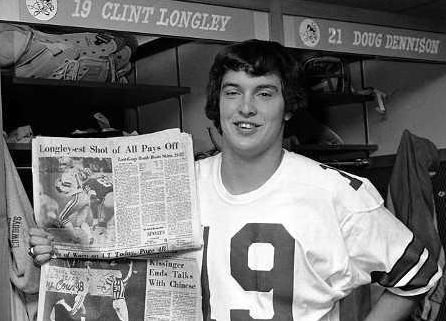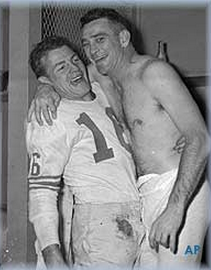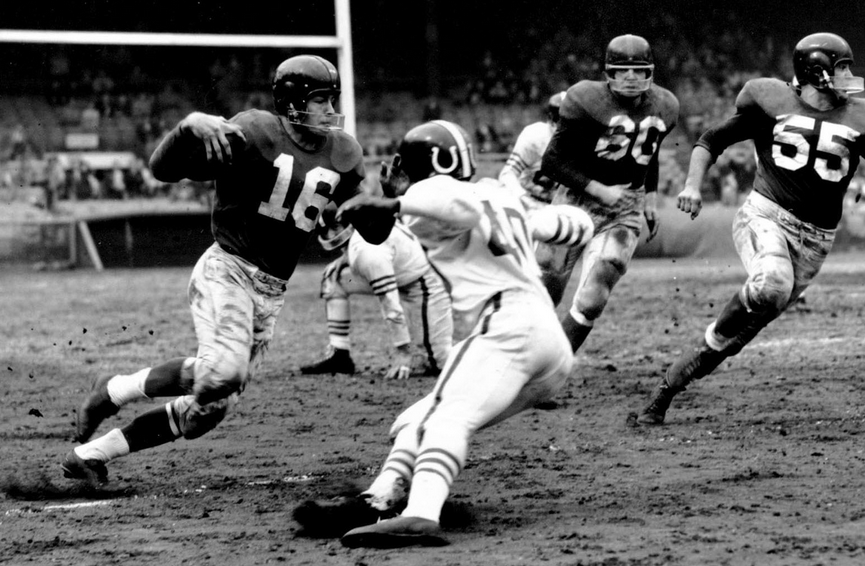Everybody loves a good story. But you can’t love it so much — as a journalist, at least — that you don’t do your due diligence and verify, verify, verify.
One such story got some play on Twitter and elsewhere a few days ago. This was after Ikemefuna Enemkpali, the Jets’ rookie linebacker, cold-cocked starting quarterback Geno Smith and broke his jaw. NFL.com’s Gil Brandt, who’d dealt with a similar episode during his Cowboys days in the ’70s, tweeted the following:
When Clint Longley sucker-punched Staubach, I traded him for the No. 2 pick in 1977 draft. We took some guy named @Tony_Dorsett.
— Gil Brandt (@Gil_Brandt) August 11, 2015
(Over 3,000 retweets, folks — for those of you scoring at home.)
There’s only one problem: It ain’t true. For starters, nobody in 1976, not even the wily Brandt, was going to — presto chango — trade Longley for the second pick in the next draft. The kid had had a stellar small college career at Abilene Christian, sure, but he was still an unknown quantity who’d thrown just 44 passes in his two NFL seasons, completing less than half of them (19). He had, however, flashed in a 1974 Thanksgiving Day game against the Redskins, coming off the bench to throw two touchdown passes to rally the Cowboys to a memorable 24-23 win. That, and his Dallas pedigree, were what gave him some market value.
But hardly No. 2-overall-pick market value. The deal Brandt brokered actually went like this: Dallas sent Longley and its 1977 first-rounder (24th) to San Diego, and the Chargers forked over their first (14th) and second (41st) selections in the same draft. Got it? The Cowboys came away with a second-rounder and moved up 10 spots in Round 1.
The trade, then, wasn’t really Longley for Dorsett. It was Longley for a couple of the chips Brandt needed to pry the No. 2 pick away from the Seahawks. Dorsett ended up costing Dallas their young QB plus four prime selections: the first- and second-rounders acquired from San Diego and two other seconds — 30th (which came from Buffalo for defensive end Pat Toomay) and 54th (the Cowboys’ own choice) overall. That 30th choice, I’ll just remind you, would be a first-rounder today.
Peter King wrote about the Longley-Staubach scuffle in his Wednesday mailbag. And to his credit, he acknowledged:
“The details in the Cowboys story are a little fuzzy now. Brandt’s recollection differs from the memory of some Cowboy players in a Matt Mosley story for the Dallas Morning News a decade ago. Brandt recalls Longley and Staubach getting into a fight after a training-camp practice in California in 1976, Longley riding Staubach about it being time for him to retire (he was 34 in that training camp), and Staubach saying if he wanted to discuss it, they’d discuss it after practice on an adjacent field. They fought then, and later, in the team’s locker room in Thousand Oaks, Calif., Brandt recalls Longley trying to hit Staubach in the head with a folding chair — just like in the old days of professional wrestling. The players recalled the fight to Mosley, but not the chair. They say that Longley cheap-shotted Staubach when he wasn’t looking in the locker room.
This is not in dispute:
“After it happened,” Brandt said Tuesday night, “Tom Landry called. He wanted Longley traded immediately.” Brandt, within a day, had Longley dealt to San Diego.
Not in dispute? It most certainly is in dispute — the “within a day” part, that is. Longley wasn’t traded for nearly three weeks (18 days to be exact). But “within a day” sounds so much more dramatic, doesn’t it?
On Aug. 25, 13 days after Longley jumped Staubach, The Associated Press reported:
Longley has been on the trade marts for almost a month, but Landry said, “We’ve had offers for him, but they weren’t good enough to consider. It’s possible he won’t play anywhere this year.”
Landry also added, “I never write off conciliation.”
It wasn’t until Aug. 30, when teams were beginning to set their final rosters, that the Chargers, still not sold on future Hall of Famer Dan Fouts, decided they needed Longley as quarterback insurance. (In their defense, Fouts was 5-20-1 as a starter at the time and had a career passer rating of 56.)
A year later, with the legendary Dorsett rushing for over 1,000 yards as a rookie, Dallas won its second Super Bowl. By then Longley was out of the league, never to return. Brandt’s version of events make for quite a tale, but it’s only that — a Texas-sized whopper honed, no doubt, in press boxes and hospitality suites over the decades. Clint Longley slugged Roger Staubach when he had his head turned, and 24 hours later I traded the SOB for Tony Dorsett. How much more brilliant can a personnel man get?
Unfortunately for Brandt, we have the Internet now, and it’s harder to get away with these fish stories — except on websites that are either too understaffed, too overworked or too trusting to double-check basic facts.
Sigh.
(Sorry, I’m just not a print-the-legend guy. When the legend becomes fact, I begin to worry about the fate of civilization.)
Lot of talk about Staubach getting punched in 1976. This photo shows black eye, bruised forehead, but no broken jaw pic.twitter.com/XDgYVgBqDy
— Gil Brandt (@Gil_Brandt) August 12, 2015
Source: pro-football-reference.com, prosportstransactions.com.



